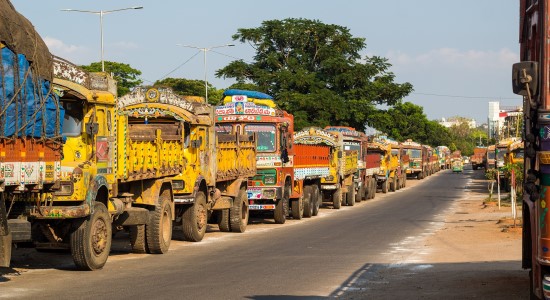Vital blog
22 December 2020:
The normal and the pandemic – autopsying 2020
In a year that “laid bare” deeply rooted inequalities and led to “excess mortality”, 2020 has been both exceptional and familiar.

By Ayo Wahlberg, Department of Anthropology, University of Copenhagen
2020 has been an exceptional year. Not, of course, in the brilliant sense, rather in the sense that it has been ‘out of the ordinary’, abnormal, terrible. Because of the pandemic, more than half the world’s population has had their movements and forms of socializing limited in some way through lockdowns and restrictions, elderly and ‘vulnerable’ groups have had to (where possible) isolate themselves, millions have lost their jobs, trillions of dollars have been borrowed to cover COVID relief packages, already grave (health and socio-economic) inequalities have been amplified, an unknown number are living with Long Covid due to sequelae from viral infection and close to 2 million people are known to have died from COVID-19.
As 2020 comes to a close, we will soon be seeing a barrage of epidemiological, economic and demographic autopsies of an extraordinary year with “excess mortality”, under-diagnosed cancers (and other serious diseases), record deficits, GDP drops, “baby busts” (or perhaps “booms”) and more. Conversely, since COVID-19 vaccines (developed at record speed) have now been approved for roll out in Asia, Europe and America, they are being described as a glimmer of hope that 2021 might see the beginnings of a gradual return to “normal” life albeit along well-rehearsed routes of stratified access to healthcare. It is hoped that 2020 (and likely also 2021) will be outliers and we will soon “have our lives back”.
At the same time, however, if there is one thing that has emerged as the key trope in sociologically and anthropologically-informed research, reporting and reflection in 2020 it is that the COVID-19 pandemic has "exposed" and "laid bare" everything from global food (in)security to unacceptable conditions faced by migrant workers, inequities in public education and, of course, inequalities in (access to) healthcare. In this ongoing social autopsy of 2020, we might say that COVID-19 became – not so much a portal – as a kind of ‘contrast agent’ that was injected into the social veins of the world, sharply enhancing the visibility of damaged global structures, healthcare systems and social forms. In these accounts, 2020 has been “all too normal” albeit in amplified ways as the pandemic and measures to contain it have disproportionately discriminated the already disadvantaged.
How then can we square these two accounts of 2020 as both “exceptional” and “all too normal”? In Georges Canguilhem’s discussion of natural historian Georges-Louis Leclerc De Buffon's (1707-1788) and physiologist Pierre Flourens' (1795-1867) conceptions of what a “normal human life span” is, he makes the case that when it comes to assessments of life expectancy in a given population “the norm is not deduced from, but rather expressed in the average” since:
"Everything happens as if a society had ‘the mortality that suits it,’ the number of the dead and their distribution into different age groups expressing the importance which the society does or does not give to the protraction of life... The average life span is not the biologically normal, but in a sense the socially normative, life span… This would be clearer still if, instead of considering the average life span in a national society taken as a whole, we broke this society down into classes, occupations, etc.” (Canguilhem 1991: 161).
It is exactly in this sense that 2020 has been both exceptional and ordinary at one and the same time. For, if there is one thing that the pandemic has hammered home it is that our world indeed has ‘the mortality that suits it’, which is to say a mortality that is stratified in ways that reveals all too clearly the differentiated ways in which societies around the world “do or do not give importance” to the protraction of life, not in some kind of general sense, but for certain groups over others. As Alondra Nelson argues in her essay “Society after Pandemic”, if ever there was a time then we must in the present ask ourselves “how do the social conditions exposed, exacerbated, and created by the novel coronavirus demand that we substantively rethink our ideas of society and, therefore, some of the prevailing assumptions, methods, and theories of social science?”
The ongoing COVID-19 pandemic is of course not a world's first, but it is taking place in an Anthropocene of hyper connectivity globally, unprecedented global and regional (socio-economic and health) inequality, entrenched colonial/settler legacies of racial discrimination and climate change. We must once and for all acknowledge and act on the appalling reality that “excess mortality” is in no way unique to 2020, rather it has been a consistent feature of years past for a very long time.
